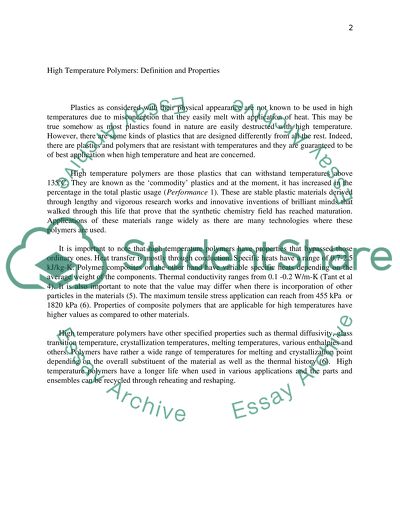High temperature polymers Essay Example | Topics and Well Written Essays - 2000 words. Retrieved from https://studentshare.org/engineering-and-construction/1462450-high-temperature-polymers
High Temperature Polymers Essay Example | Topics and Well Written Essays - 2000 Words. https://studentshare.org/engineering-and-construction/1462450-high-temperature-polymers.


